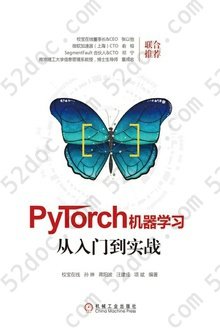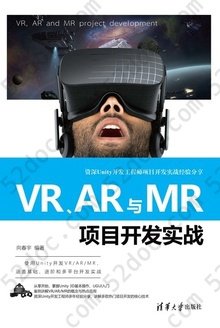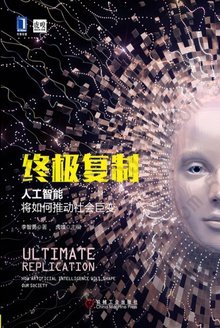注重体验与质量的电子书资源下载网站
分类于: 云计算&大数据 职场办公
简介

Vision: A Computational Investigation into the Human Representation and Processing of Visual Information 豆 9.6分
资源最后更新于 2020-08-23 08:19:35
作者:David Marr
出版社:The MIT Press
出版日期:2010-01
ISBN:9780262514620
文件格式: pdf
标签: 神经科学 计算机视觉 人工智能 认知神经科学 CV 机器学习 Vision 视觉
简介· · · · · ·
David Marr's posthumously published Vision (1982) influenced a generation of brain and cognitive scientists, inspiring many to enter the field. In Vision, Marr describes a general framework for understanding visual perception and touches on broader questions about how the brain and its functions can be studied and understood. Researchers from a range of brain and cognitive scie...
目录
Detailed Contents
Foreword by Shimon Ullman xvii
Preface xxiii
PART I
INTRODUCTION AND
PHILOSOPHICAL PRELIMINARIES
GENERAL INTRODUCTION 3
Chapter 1
The Philosophy and the Approach 8
Background 8
Understanding Complex Information-Processing Systems 19
Representation and description 20
Process 22
The three levels 24
Importance of computational theory 27
The approach of J. J. Gibson 29
A Representational Framework for Vision 31
The purpose of vision 32
Advanced vision 34
To the desirable via the possible 36
PART II
VISION
Chapter 2
Representing the Image 41
Physical Background of Early Vision 41
Representing the image 44
Underlying physical assumptions 44
Existence of surfaces 44
Hierarchical organization 44
Similarity 47
Spatial continuity 49
Continuity of discontinuities 49
Continuity of fl ow 50
General nature of the representation 51
Zero-Crossings and the Raw Primal Sketch 54
Zero-Crossings 54
Biological implications 61
The psychophysics of early vision 61
The physiological realization of the ▽2G filters 64
The physiological detection of zero crossings 64
The fi rst complete symbolic representation of the image 67
The raw primal sketch 68
Philosophical aside 75
Spatial Arrangement of an Image 79
Light Sources and Transparency 86
Other light source effects 88
Transparency 89
Conclusions 90
Grouping Processes and the Full Primal Sketch 91
Main points in the argument 96
The computational approach and the psychophysics of texture discrimination 96
Chapter 3
From Images to Surfaces 99
Modular Organization of the Human Visual Processor 99
Processes, Constraints, and the Available Representations of an Image 103
Stereopsis 111
Measuring stereo disparity 111
Computational theory 111
Algorithms for stereo matching 116
A cooperative algorithm 116
Cooperative algorithms and the stereo matching problem 122
Biological evidence 125
A second algorithm 127
Uniqueness, cooperativity, and the pulling effect 140
Panum’s fusional area 144
Impressions of depth from larger disparities 144
Have we solved the right problem? 148
Vergence movements and the 2½-D sketch 149
Neural implementation of stereo fusion 152
Computing distance and surface orientation from disparity 155
Computational theory 155
Distance from the viewer to the surface 155
Surface orientation from disparity change 156
Algorithm and implementation 159
Directional Selectivity 159
Introduction to visual motion 159
Computational theory 165
An algorithm 167
Neural implementation 169
Using directional selectivity to separate independently moving surfaces 175
Computational theory 175
Algorithm and implementation 177
Looming 182
Apparent Motion 182
Why apparent motion? 183
The two halves of the problem 184
The correspondence problem 188
Empirical fi ndings 188
What is the input representation? 188
Two dimensionality of the correspondence process 193
Ullman’s theory of the correspondence process 196
A critique of Ullman’s theory 199
A new look at the correspondence problem 202
One problem or two? 202
Separate systems for structure and object constancy 204
Structure from Motion 205
The problem 205
A previous approach 207
The rigidity constraint 209
The rigidity assumption 210
A note about the perspective projection 211
Optical flow 212
The input representation 212
Mathematical results 213
Shape Contours 215
Some examples 216
Occluding contours 218
Constraining assumptions 219
Implications of the assumptions 222
Surface orientation discontinuities 225
Surface contours 226
The puzzle and diffi culty of surface contours 228
Determining the shape of the contour generator 229
The effects of more than one contour 230
Surface Texture 233
The isolation of texture elements 234
Surface parameters 234
Possible measurements 234
Estimating scaled distance directly 238
Summary 239
Shading and Photometric Stereo 239
Gradient space 240
Surface illumination, surface refl ectance, and image intensity 243
The refl ectance map 245
Recovery of shape from shading 248
Photometric stereo 249
Brightness, Lightness, and Color 250
The Helson–Judd approach 252
Retinex theory of lightness and color 253
Algorithms 255
Extension to color vision 256
Comments on the retinex theory 257
Some physical reasons for the importance of simultaneous contrast 259
Hypothesis of the superfi cial origin of nonlinear changes in intensity 26
Implications for measurements on a trichromatic image 262
Summary of the approach 264
Summary 264
Chapter 4
The Immediate Representation of Visible Surfaces 268
Introduction 268
Image Segmentation 270
Reformulating the Problem 272
The Information to be Represented 275
General Form of the 2½-D Sketch 277
Possible Forms for the Representation 279
Possible Coordinate Systems 283
Interpolation, Continuation, and Discontinuities 285
Computational Aspects of the Interpolation Problem 288
Discontinuities 289
Interpolation methods 290
Other Internal Computations 291
Chapter 5
Representing Shapes for Recognition 295
Introduction 295
Issues Raised by the Representation of Shape 296
Criteria for judging the effectiveness of a shape representation 296
Accessibility 297
Scope and uniqueness 297
Stability and sensitivity 298
Choices in the design of a shape representation 298
Coordinate systems 298
Primitives 300
Organization 302
The 3-D Model Representation 302
Natural coordinate systems 303
Axis-based descriptions 304
Modular organization of the 3-D model representation 305
Coordinate system of the 3-D model 307
Natural Extensions 309
Deriving and Using the 3-D Model Representation 313
Deriving a 3-D model description 313
Relating viewer-centered to object-centered coordinates 317
Indexing and the catalogue of 3-D models 318
Interaction between derivation and recognition 321
Finding the correspondence between image and catalogued model 322
Constraint analysis 322
Psychological Considerations 325
Chapter 6
Synopsis 329
PART III
EPILOGUE
Chapter 7
In Defense of the Approach 335
Introduction 335
A Conversation 336
Afterword by Tomaso Poggio 362
Glossary 368
Bibliography 375
Index 393
Foreword by Shimon Ullman xvii
Preface xxiii
PART I
INTRODUCTION AND
PHILOSOPHICAL PRELIMINARIES
GENERAL INTRODUCTION 3
Chapter 1
The Philosophy and the Approach 8
Background 8
Understanding Complex Information-Processing Systems 19
Representation and description 20
Process 22
The three levels 24
Importance of computational theory 27
The approach of J. J. Gibson 29
A Representational Framework for Vision 31
The purpose of vision 32
Advanced vision 34
To the desirable via the possible 36
PART II
VISION
Chapter 2
Representing the Image 41
Physical Background of Early Vision 41
Representing the image 44
Underlying physical assumptions 44
Existence of surfaces 44
Hierarchical organization 44
Similarity 47
Spatial continuity 49
Continuity of discontinuities 49
Continuity of fl ow 50
General nature of the representation 51
Zero-Crossings and the Raw Primal Sketch 54
Zero-Crossings 54
Biological implications 61
The psychophysics of early vision 61
The physiological realization of the ▽2G filters 64
The physiological detection of zero crossings 64
The fi rst complete symbolic representation of the image 67
The raw primal sketch 68
Philosophical aside 75
Spatial Arrangement of an Image 79
Light Sources and Transparency 86
Other light source effects 88
Transparency 89
Conclusions 90
Grouping Processes and the Full Primal Sketch 91
Main points in the argument 96
The computational approach and the psychophysics of texture discrimination 96
Chapter 3
From Images to Surfaces 99
Modular Organization of the Human Visual Processor 99
Processes, Constraints, and the Available Representations of an Image 103
Stereopsis 111
Measuring stereo disparity 111
Computational theory 111
Algorithms for stereo matching 116
A cooperative algorithm 116
Cooperative algorithms and the stereo matching problem 122
Biological evidence 125
A second algorithm 127
Uniqueness, cooperativity, and the pulling effect 140
Panum’s fusional area 144
Impressions of depth from larger disparities 144
Have we solved the right problem? 148
Vergence movements and the 2½-D sketch 149
Neural implementation of stereo fusion 152
Computing distance and surface orientation from disparity 155
Computational theory 155
Distance from the viewer to the surface 155
Surface orientation from disparity change 156
Algorithm and implementation 159
Directional Selectivity 159
Introduction to visual motion 159
Computational theory 165
An algorithm 167
Neural implementation 169
Using directional selectivity to separate independently moving surfaces 175
Computational theory 175
Algorithm and implementation 177
Looming 182
Apparent Motion 182
Why apparent motion? 183
The two halves of the problem 184
The correspondence problem 188
Empirical fi ndings 188
What is the input representation? 188
Two dimensionality of the correspondence process 193
Ullman’s theory of the correspondence process 196
A critique of Ullman’s theory 199
A new look at the correspondence problem 202
One problem or two? 202
Separate systems for structure and object constancy 204
Structure from Motion 205
The problem 205
A previous approach 207
The rigidity constraint 209
The rigidity assumption 210
A note about the perspective projection 211
Optical flow 212
The input representation 212
Mathematical results 213
Shape Contours 215
Some examples 216
Occluding contours 218
Constraining assumptions 219
Implications of the assumptions 222
Surface orientation discontinuities 225
Surface contours 226
The puzzle and diffi culty of surface contours 228
Determining the shape of the contour generator 229
The effects of more than one contour 230
Surface Texture 233
The isolation of texture elements 234
Surface parameters 234
Possible measurements 234
Estimating scaled distance directly 238
Summary 239
Shading and Photometric Stereo 239
Gradient space 240
Surface illumination, surface refl ectance, and image intensity 243
The refl ectance map 245
Recovery of shape from shading 248
Photometric stereo 249
Brightness, Lightness, and Color 250
The Helson–Judd approach 252
Retinex theory of lightness and color 253
Algorithms 255
Extension to color vision 256
Comments on the retinex theory 257
Some physical reasons for the importance of simultaneous contrast 259
Hypothesis of the superfi cial origin of nonlinear changes in intensity 26
Implications for measurements on a trichromatic image 262
Summary of the approach 264
Summary 264
Chapter 4
The Immediate Representation of Visible Surfaces 268
Introduction 268
Image Segmentation 270
Reformulating the Problem 272
The Information to be Represented 275
General Form of the 2½-D Sketch 277
Possible Forms for the Representation 279
Possible Coordinate Systems 283
Interpolation, Continuation, and Discontinuities 285
Computational Aspects of the Interpolation Problem 288
Discontinuities 289
Interpolation methods 290
Other Internal Computations 291
Chapter 5
Representing Shapes for Recognition 295
Introduction 295
Issues Raised by the Representation of Shape 296
Criteria for judging the effectiveness of a shape representation 296
Accessibility 297
Scope and uniqueness 297
Stability and sensitivity 298
Choices in the design of a shape representation 298
Coordinate systems 298
Primitives 300
Organization 302
The 3-D Model Representation 302
Natural coordinate systems 303
Axis-based descriptions 304
Modular organization of the 3-D model representation 305
Coordinate system of the 3-D model 307
Natural Extensions 309
Deriving and Using the 3-D Model Representation 313
Deriving a 3-D model description 313
Relating viewer-centered to object-centered coordinates 317
Indexing and the catalogue of 3-D models 318
Interaction between derivation and recognition 321
Finding the correspondence between image and catalogued model 322
Constraint analysis 322
Psychological Considerations 325
Chapter 6
Synopsis 329
PART III
EPILOGUE
Chapter 7
In Defense of the Approach 335
Introduction 335
A Conversation 336
Afterword by Tomaso Poggio 362
Glossary 368
Bibliography 375
Index 393







